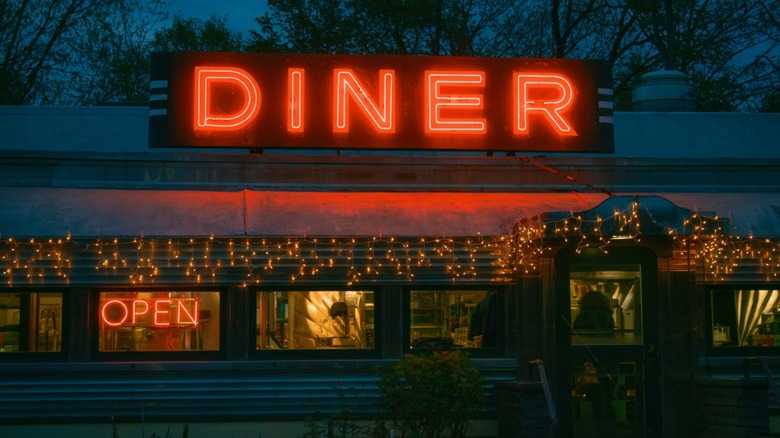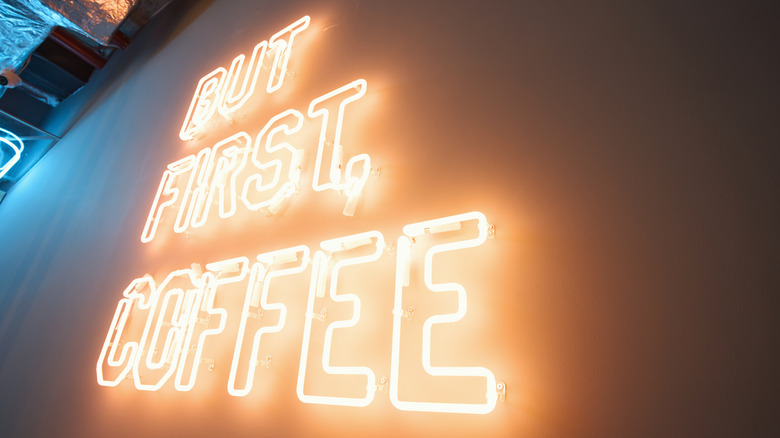The Rise And Fall Of The Neon Signs That Defined American Diners
With their mesmerizing glow, neon signs once dotted the American roadside, beckoning travelers to stop and eat at the coolest diners across the U.S. Neon signs meant everything to hungry road warriors, especially on long highways like the iconic Route 66. The rise of car culture in the early 20th century — particularly after World War II — sparked a golden age for roadside diners and drive-ins. As more Americans hit the highways, diners popped up to meet their needs, often built quickly using prefabricated materials and parked right off busy roads.
They offered speed, convenience, and the comfort of a hot meal. Neon was the perfect complement. It was fast, flashy, and impossible to miss. The neon light itself was invented in 1910 by French engineer Georges Claude, who harnessed neon gas to create a brilliant red-orange illumination at The Paris Motor Show the same year. By the 1930s, neon signs could be found in almost every city around the world, and elaborate diner logos became as essential as chrome counters and jukeboxes.
By bending glass tubes by hand and filling them — first with neon, until technology allowed for argon and other gases to be used, along with phosphor coatings — artisans crafted radiant signs in dozens of colors. Whether a steaming mug, the diner's name, or a big neon "EAT," these signs were visual magnets for highway travelers. Underneath that neon glow, diners became icons of round-the-clock hospitality. These signs reflected an era of American optimism, easy mobility, and cheap eats. But by the '60s, neon diner signs began to fade.
Neon's glow-up — from diner beacons to Insta chic
The glass tubes of neon signs were fragile, maintenance-intensive, and expensive. Health concerns over lead in soft-glass tubes along with the notion that neon was outdated further pushed those old neon diner signs into decline. Still, neon never truly disappeared — it simply evolved. Cities like Las Vegas preserved neon icons through efforts such as The Neon Museum, which houses more than 250 unrestored signs and several fully-restored pieces. Exhibits such as "Brilliant! Jackpot" use projection mapping to simulate the original glow of famous signage, bringing vintage neon landmarks back to life.
Today, neon exists in two main forms: vintage originals and LED-based faux-neon. Real neon signs are still around in retro-themed diners, especially along Route 66, where you can order favorites such as classic meatloaf, mashed potatoes, and countless other foods that always taste better in a diner than at home. Meanwhile, a new wave of LED neon-style signs that are flexible, durable, and energy-efficient light up trendy cafés, bars, and restaurants.
Modern signs favor cheeky phrases such as "You're Like, Really Pretty" or "But First, Coffee," and they're designed less for roadside visibility and more for aesthetic vibes and Instagram appeal. These days, you can score an LED neon "Eat Here" sign (or whatever you like) for under $40 and just put it in your kitchen. Or better yet, take a road trip to see some of the best diners in every U.S. state, because bright vibes never go out of style. Just don't forget to say cheese, and order some for the table, too.

